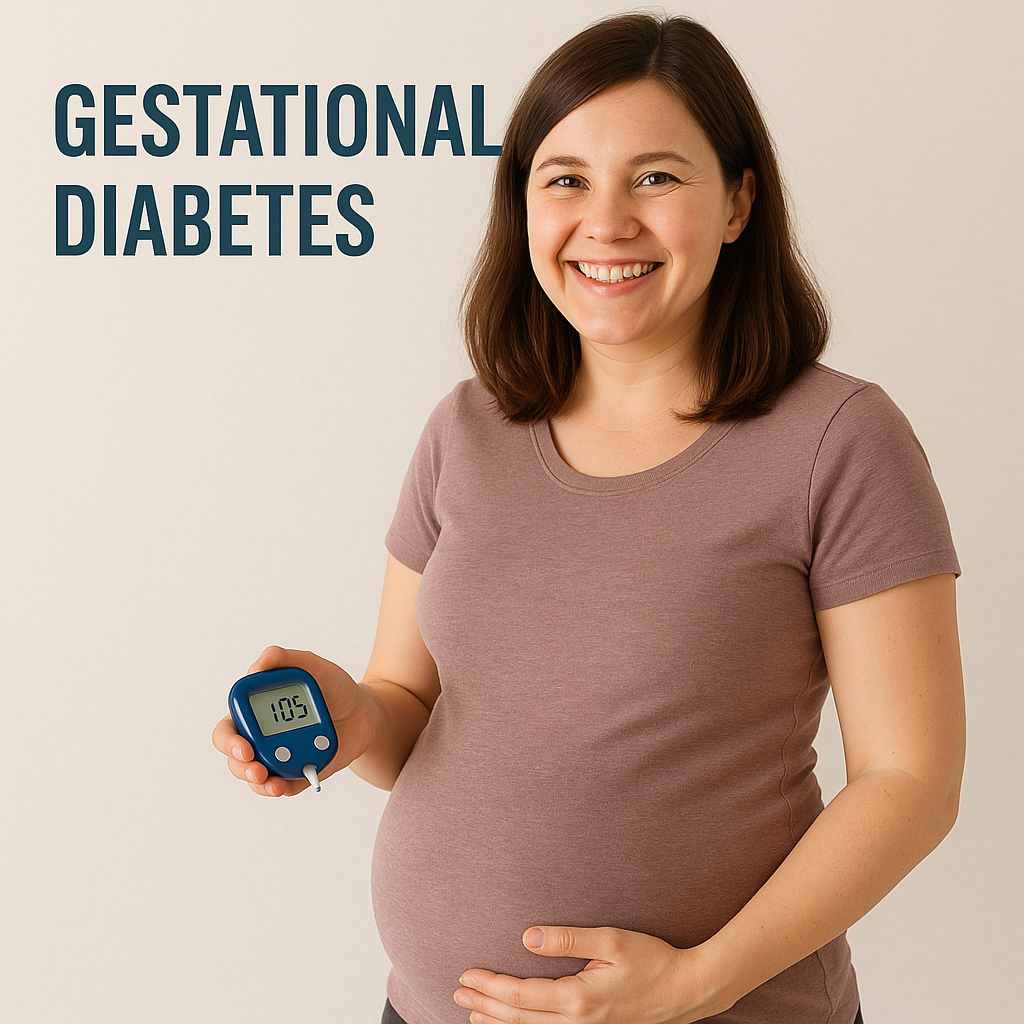(619) 465-4880
Gestational diabetes mellitus (GDM) is a type of diabetes that develops during pregnancy, typically in the second or third trimester. It affects roughly 6–10% of pregnancies in the U.S. and can impact both mom and baby if not managed properly. But here’s the good news—early intervention, nutrition, movement, and supportive care like chiropractic can make a big difference.

GDM happens when hormonal changes during pregnancy interfere with the body's ability to use insulin effectively, leading to elevated blood sugar levels. While it usually resolves after delivery, GDM increases the risk of birth complications and future Type 2 diabetes for both the mother and child.
Risk factors include:
1. Nutrition and Blood Sugar Control
Eating a balanced diet is the first line of defense. That means complex carbs paired with proteins, high-fiber vegetables, and avoiding spikes from refined sugar. Research shows that dietary modifications alone can control GDM in 70–85% of cases (American Diabetes Association, 2023).
2. Physical Activity
Movement improves insulin sensitivity. Even 30 minutes of walking a day can help regulate blood sugar and reduce the need for medication (ACOG, 2020).
3. Regular Monitoring
Frequent glucose checks are critical. Many women test 4 times daily—fasting and post-meals—to keep readings within a safe range.
4. Stress Management and Sleep
Both affect blood sugar. Stress hormones like cortisol can cause spikes, and poor sleep reduces insulin efficiency.
5. Chiropractic Care
This is where many women find unexpected but meaningful support.
Pregnancy alters the biomechanics of the spine and pelvis. Add in a condition like GDM, and the physical stress on the body increases. Chiropractic care may not lower blood sugar directly, but it can reduce many of the stressors and symptoms that worsen the condition.
The spine houses the nervous system, which regulates every organ—including the pancreas and adrenal glands. Misalignments (subluxations) can interfere with nerve signals, affecting hormone regulation and stress response. A 2017 study published in Journal of Pediatric, Maternal & Family Health found that chiropractic adjustments improved autonomic nervous system balance in pregnant women.
Chiropractic adjustments are known to help relieve musculoskeletal pain and improve sleep, which in turn helps reduce cortisol levels. Lower cortisol = better blood sugar control. A small 2019 pilot study in Complementary Therapies in Clinical Practice showed reduced perceived stress and improved sleep in pregnant women under chiropractic care.
If pelvic misalignments make walking or exercising uncomfortable, many moms cut back on movement—which is key to managing GDM. Chiropractic care helps correct these issues gently and safely. The Journal of Manipulative and Physiological Therapeutics (2012) highlighted that pregnant women receiving chiropractic care reported improved mobility and decreased pain.
At Awesome Family Chiropractic, we also look at lifestyle, movement, and posture as part of your prenatal care. Many of our pregnant patients report feeling more in control of their bodies after a few adjustments—and when you feel better physically, it’s easier to stay consistent with good habits.
Gestational diabetes can be managed effectively with the right tools, and chiropractic care is a safe, supportive option to add to your routine. At Awesome Family Chiropractic, we’re here to help you stay balanced, mobile, and empowered throughout your pregnancy.
We have three locations—Alpine, La Mesa, and Santee—and we welcome expecting mothers at any stage of their journey. Whether you’ve just been diagnosed with GDM or want to stay proactive with your prenatal health, we’re ready to support you.
This blog is for educational purposes only and not a substitute for professional medical advice. Consult a healthcare provider before starting any new treatment. Outcomes and experiences discussed may vary. For immediate medical concerns, contact your physician.
References: